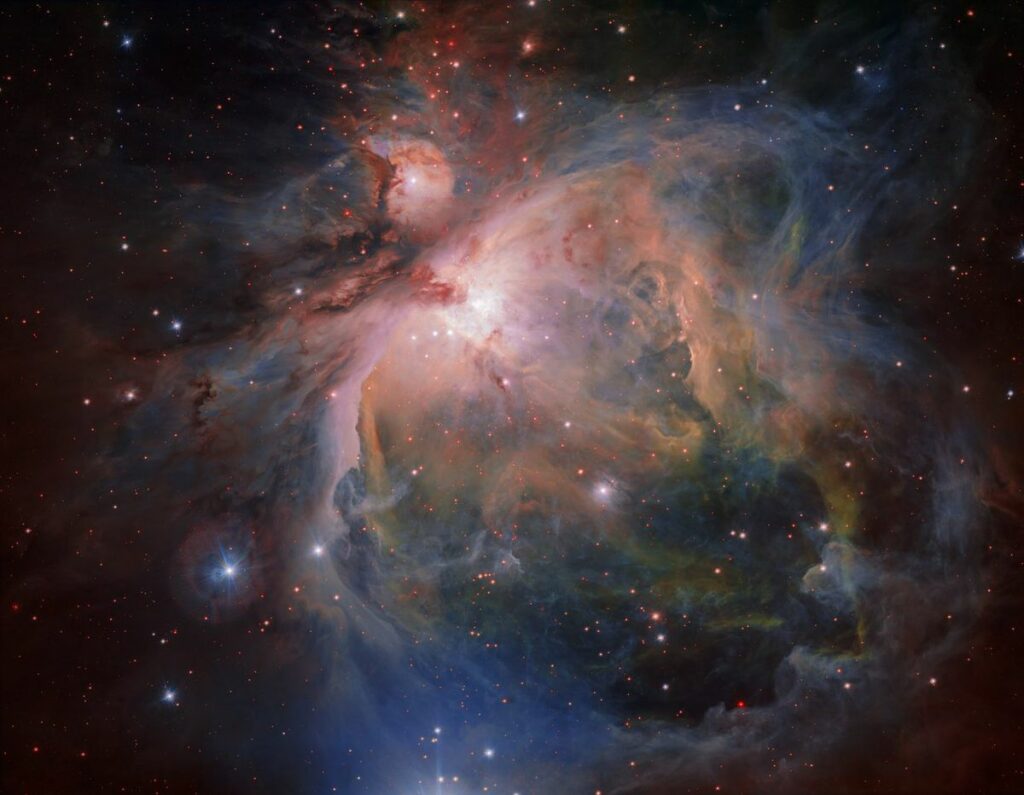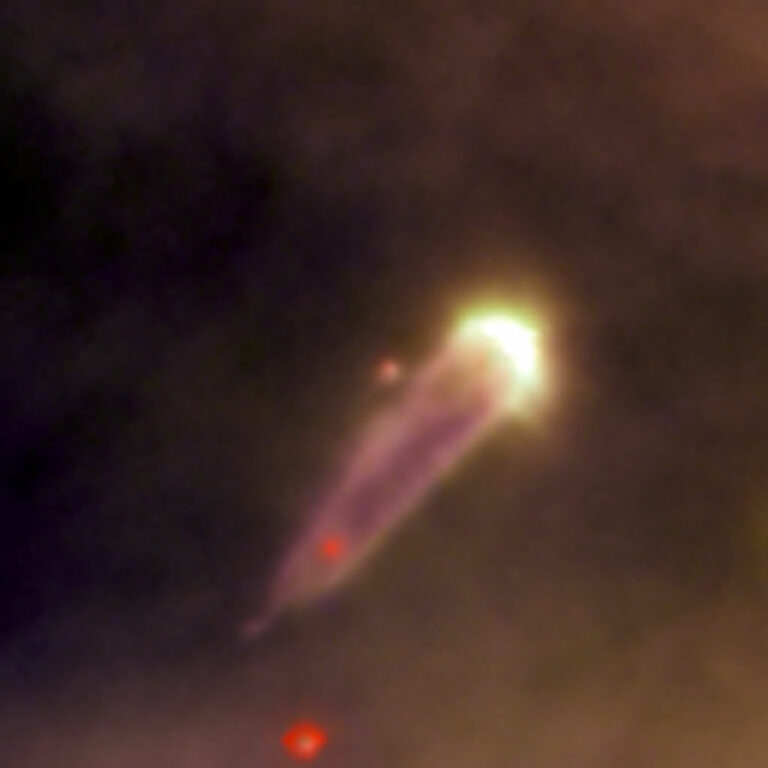This Comet-Shaped Planet-Forming Disk is Fighting for Survival
A new picture of a proplyd resembling a comet has raised more questions about the nature of these radiation shielded planetary cradles.
In the region of Orion Nebula there is a cluster of peculiar objects shaped like tear drops. They may resemble strange comets, but are actually gas and dust disks which are shrinking around young stars. Astronomers are mystified by the presence of these disks because they should have disappeared ages ago.
This is, however, what makes them interesting subjects of research and a new picture of one of these objects has been taken using the Multi Unit Spectroscopic Explorer (MUSE) located in the Very Large Telescope in Chile. This image brightly presents one of these strange objects, known as 177-341 W.
It is a type of body known as a proplyd, which is short for ionized protoplanetary disk. The first proplyds were identified in a nebula known as the Orion Nebula, which is located approximately 1,344 light years away from the Earth, in mid-1990s using the Hubble Space Telescope. They are being gradually dissipated by the violent ultraviolet radiation from such big stars in the nebula of which the most conspicuous is the theta-1 Orionis C which is one of the four main stars of the young stellar cluster in the Orion Nebula known as the Trapezium.
Theta-1 Ori C is so large that its mass is 33 times the mass of the Sun and it is classified as O-type stars in the Hertzsprung–Russell diagram indicating stellar evolution. It is also 204,000 times brighter than our sun, which implies it emits prodigious amounts of ultraviolet radiation that can ionize anything for light years. Proplyds are the young planetary systems which unfortunately become illuminated by that ultraviolet radiation.
The bright arc, or cusp, around the top of the proplyd is 177-341 W , indicating that the powerful torrent of ultraviolet radiation from theta-1 Ori C is hitting the gentler stellar wind from the star at the core of 177-341 W, thereby creating a shockwave.
It also illuminates the surface of the planet-forming disk of gas and dust, and as the gases on the surface of the disk warm up, they not only get expand but also tend to be swept along by the stream of ultraviolet radiation. This builds up the proplyd’s ‘comet-like tail’ that is pointing in the opposite direction of theta-1 Ori C which is located further than top right of the picture.
In total, 178 proplyds have been identified to date in the Orion Nebula. And that could mean that there may be giving birth to 178 more planetary systems apart from those that are already in existence in that region. We say “potentially” because there is one big caveat: Proplyd Lifetime Problem.

Since ultraviolet radiation pulls material out of the disks that would have formed planets, the disks get depleted of mass I assume that given that the Orion Nebula is only 2-3 million years old there should be no proplyd left to form substantial planetary systems. At the limit, theta-1 Ori C must prevent any planets from forming at all!Nevertheless, we can detect the proplyds. Is our estimate of how much mass they lose a fallacy?
A group of astronomers, headed by Mari-Lilis Aru of ESO attempted to answer that question using data from MUSE on twelve proplyds, including 177-341 W in Orion Nebula. They concluded that the proplyds are currently shedding mass at rates ranging from 1 x 10^-6 to 5 x 10^-5 solar masses per year. 07 and 94. 5 x 10 – 7 solar masses or between 6 x 10 – 7 and 9. 45 x 10 – 7 solar masses per year. This is in good agreement with other previous estimates of the mass loss rate. They should have dispersed at that rate by now, leaving no proplyds behind them. We should not be able to observe them.
Hence the question remains unanswered, and proplyds will remain a focus of observation and discussion in the years to come as astronomers attempt to determine what allows the objects to survive and coalesce into planets in spite of the onslaught of ultraviolet radiation.
The findings from Aru’s team are to be published in the journal Astronomy & Astrophysics. A preprint of their work is available online.
Do not forget to share your opinion with us to provide you with the best posts !




0 Comments